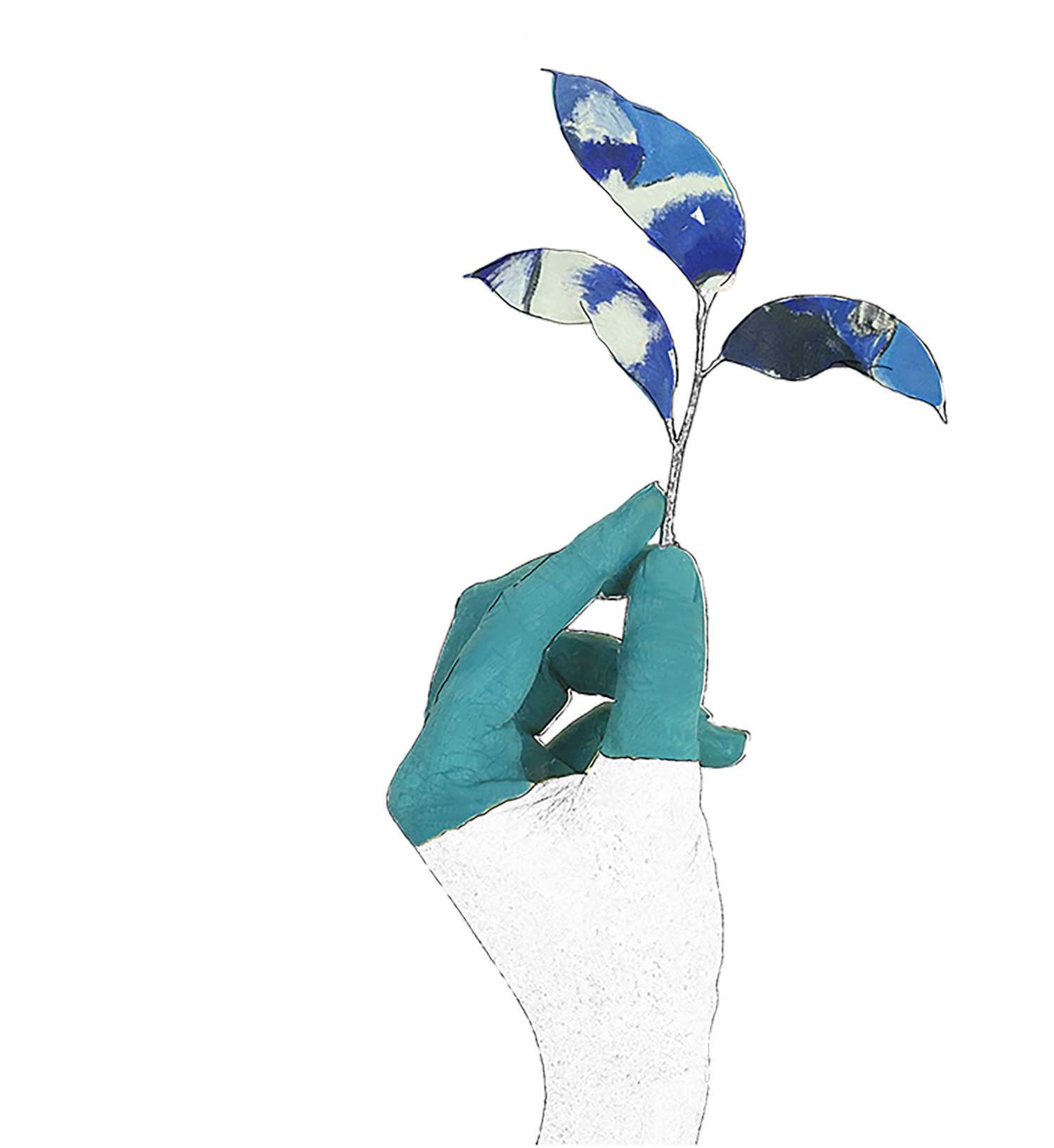gender and islam
Illustration by Robbie Masters.
I have always been drawn, like a moth to a flame, to the binary and segregated structure of Islam. Perhaps it’s the subconscious feeling of safety in a non-male environment; either with my peers or with older, wiser aunties, there seems to be a piece of me that thinks that, here in the back entrance of the mosque and on the other side of the room, I won’t get hurt. Perhaps, probably more so, it’s my autism which makes me a sucker for clearly enforced rules and traditional, institutional religious structures - this being no exception.
I was fortunate enough to have grown up in an environment where ideas of being transgender and experiencing gender dysphoria were normalised and accepted, albeit in binary terms. I didn’t want to have a boy’s body, so I must be a girl. I didn’t know anything beyond that, so I didn’t really give it much thought. When I decided to put on hijab, I did so in the context that it was something Muslim women could choose to do. After encountering non-binary Muslims on social media, especially non-binary hijabis, I began to expand and change my understanding of my gender, more importantly, I began to rethink what it meant to wear hijab and what it meant for me to wear it with this new awareness of myself.
How did my religion and the way that hijab added a layer of presenting as female affect my relationship with myself?
Of course, I can only speak about my personal experience, non-binary isn’t some third gender identity and every person’s relationship with their gender and faith is unique. Islamic theology and law are very accepting of transgender identities, with mention of a non-binary gender in the Qur’an (42:50) as well as clerics in countries such as Pakistan explicitly granting transgender people equal marriage rights. But despite this acceptance, I often felt very resigned to almost always being perceived and referred to as female. Although I feel empowered and much closer to my faith through dressing modestly, I often wonder how my gender presentation and sense of self would be different if the most convenient way to dress myself didn’t consist of long flowy dresses and skirts. Even when I wear men’s shirts and trousers and try to bind my chest, the scarf on my head carries with it a sign of visible femininity that I cannot escape. In Muslim spaces, I sit on the women’s side of the room, I am called ‘sister’. This is fine enough to me, but has resulted in the amusing phenomenon that out of those who know I use they/them pronouns, I am the one who misgenders myself the most – whether it’s because of this or more internal reasons, I am hyper-aware of my female presentation, as well as the lingering sense of discomfort I cannot shake.
For me, and I can imagine for other non-binary Muslims in a similar situation of half-out/half-not, the very structure that I find comfort and welcome in is the same one that also makes me feel a little invisible. Outside the community feeling and relative anonymity of social media (which for other reasons I took an ungrateful exit from), there is very little real space for discussion. While speeches and panels about sexuality and gender in faith are needed and appreciated, they often focus more on clerical interpretations and expert knowledge rather than personal experiences that would unite people. Online communities are valuable for support and provide an important safe space for those who are not out in their offline life; but lack of support and even acknowledgement within our houses of worship and religious communities is a real problem, especially in religions such as Islam that rely so heavily on communal practice and care.
It isn’t that I want to operate outside of the binary gender structure of Islamic practices – the only problem I have with the women’s section of the mosque is that it’s up several flights of stairs and walking into the main men’s section would be a lot more accessible for me. Rather, I wish there were a better and more open way for me to explore my place within it. I sincerely hope that other non-binary Muslims, or members of religions with similar structures, feel safe and supported in their identities. Personally, I’m usually fairly terrified to bring up the subject with members of my local religious community; while I know in all likelihood most would be very accepting, there is still the lingering anxiety of ‘what if’.
Facing our fears is important if we want progress to be made, I don’t expect to suddenly find an exact mental place I belong without an impetus on my part. I hope to open more channels of acknowledgement, discussion and acceptance within my community and others. To interact with my faith and those around me in an even more meaningful and purposeful way. There is a space for all of us in whatever religion we practice (or don’t!) and we all deserve to find it and to find each other.
Mia Nicole Davies is a disability advocate and freelance writer currently writing for Mxogyny and various zines. They are also the LGBTQ+ Representative and University of Edinburgh ambassador for TABOU, a university student magazine increasing access and inclusion for disabled voices.

